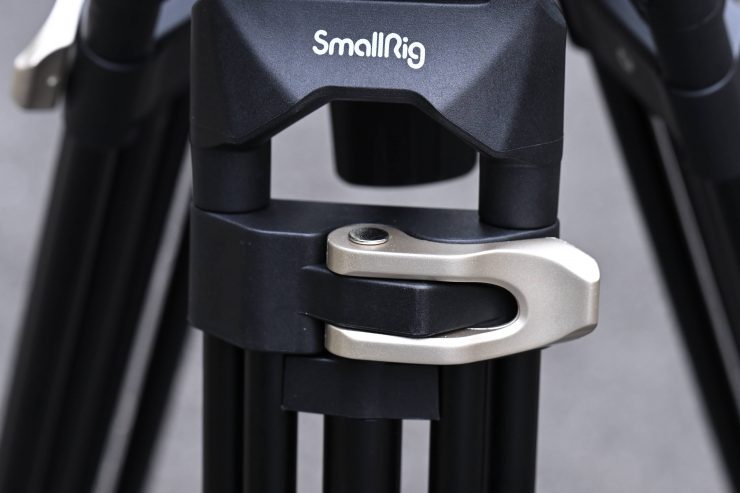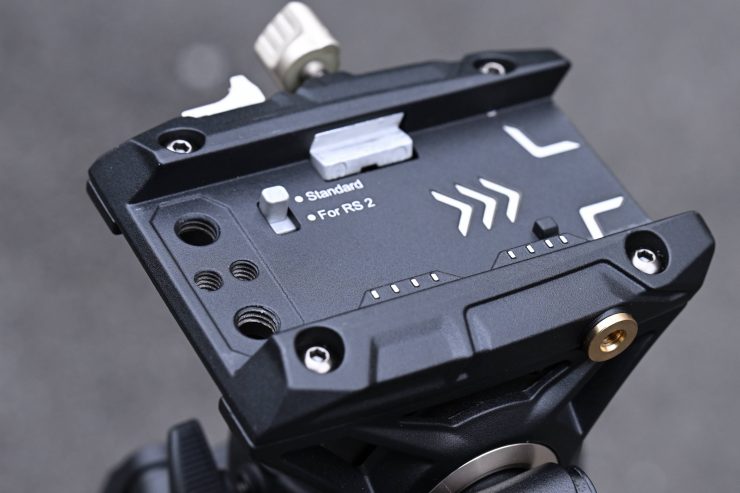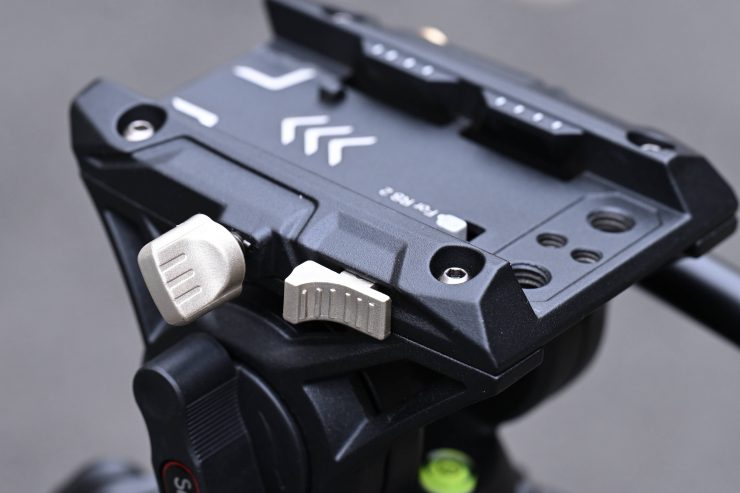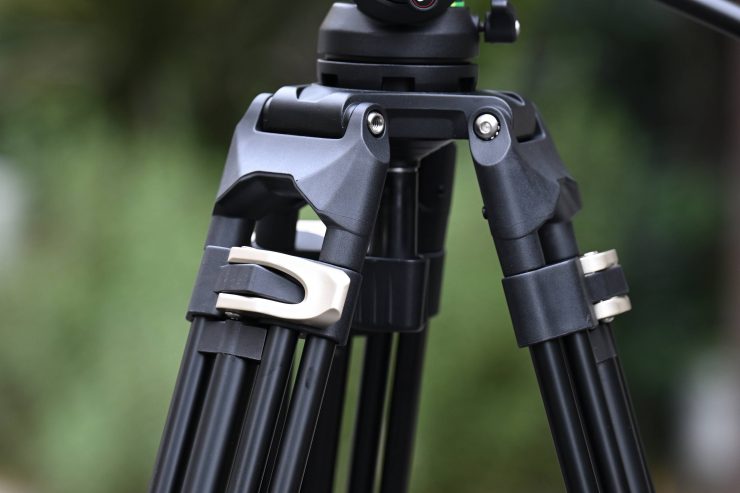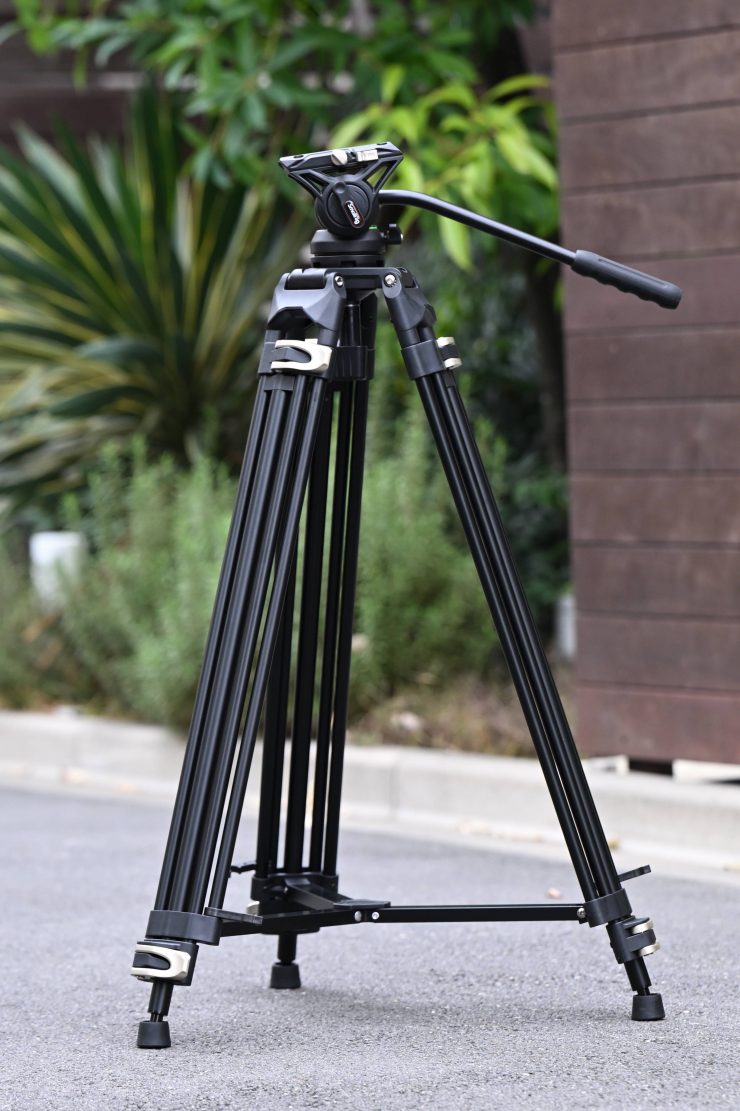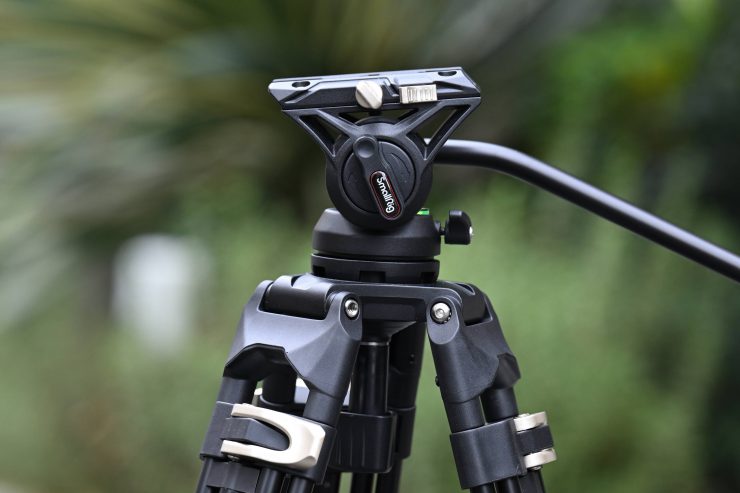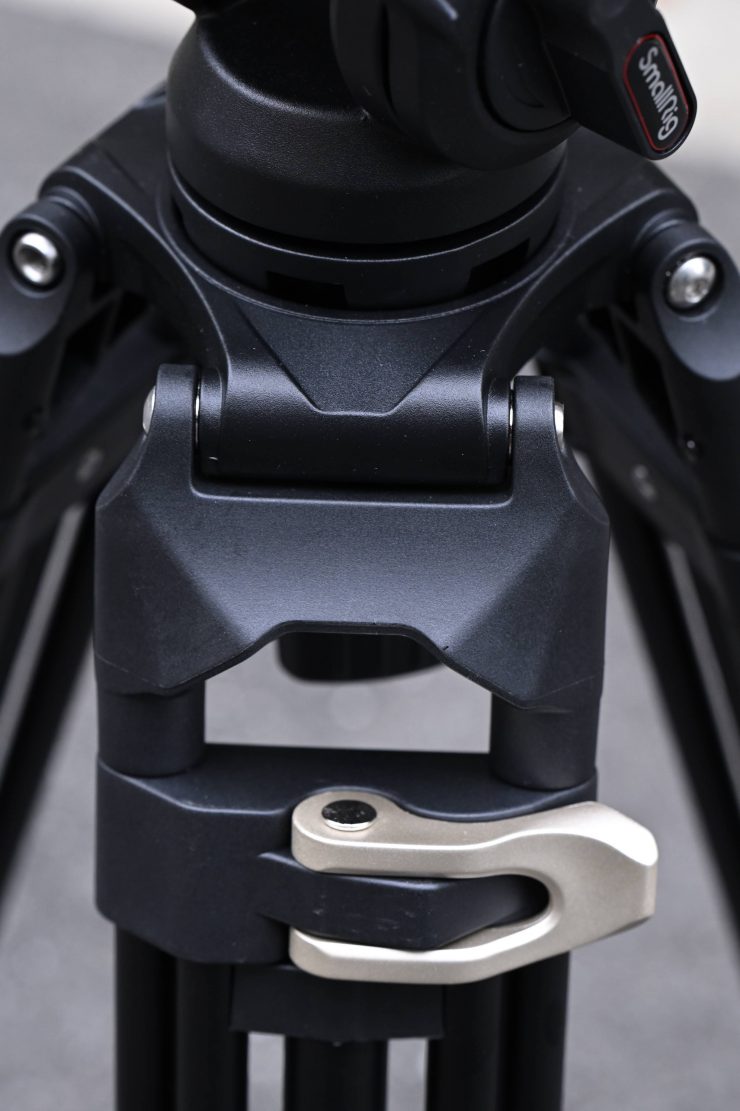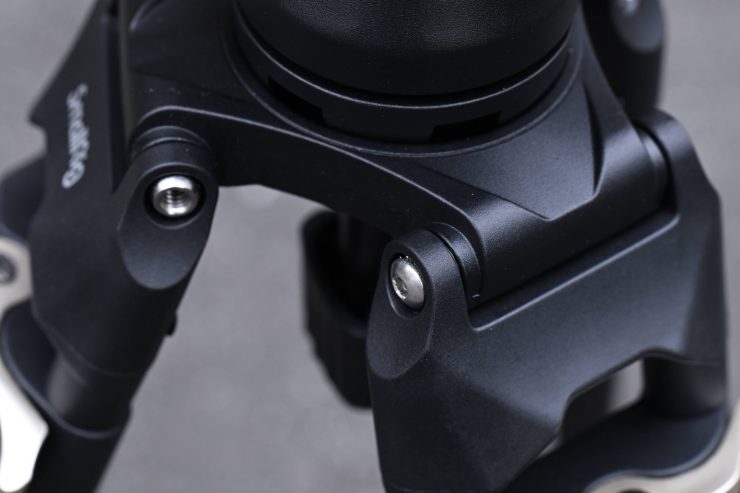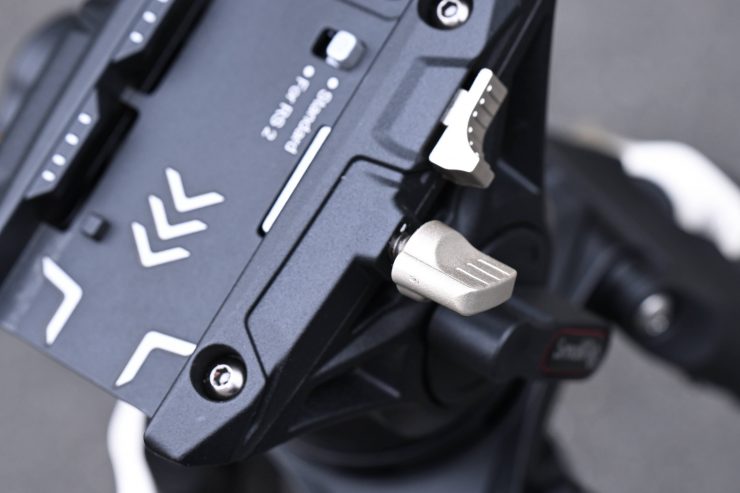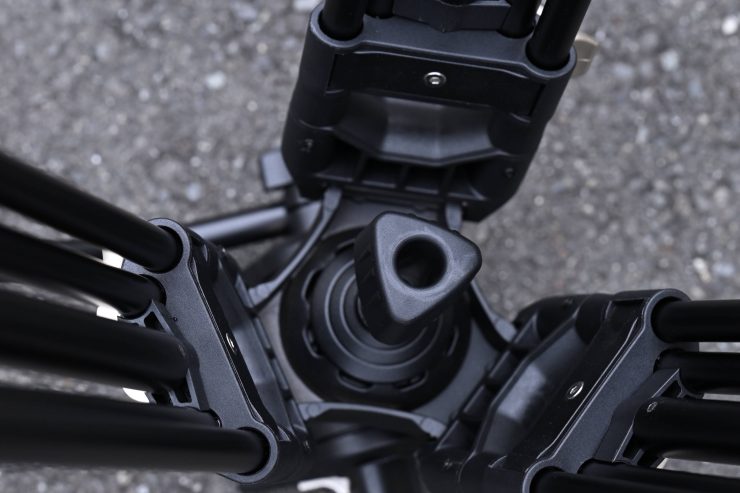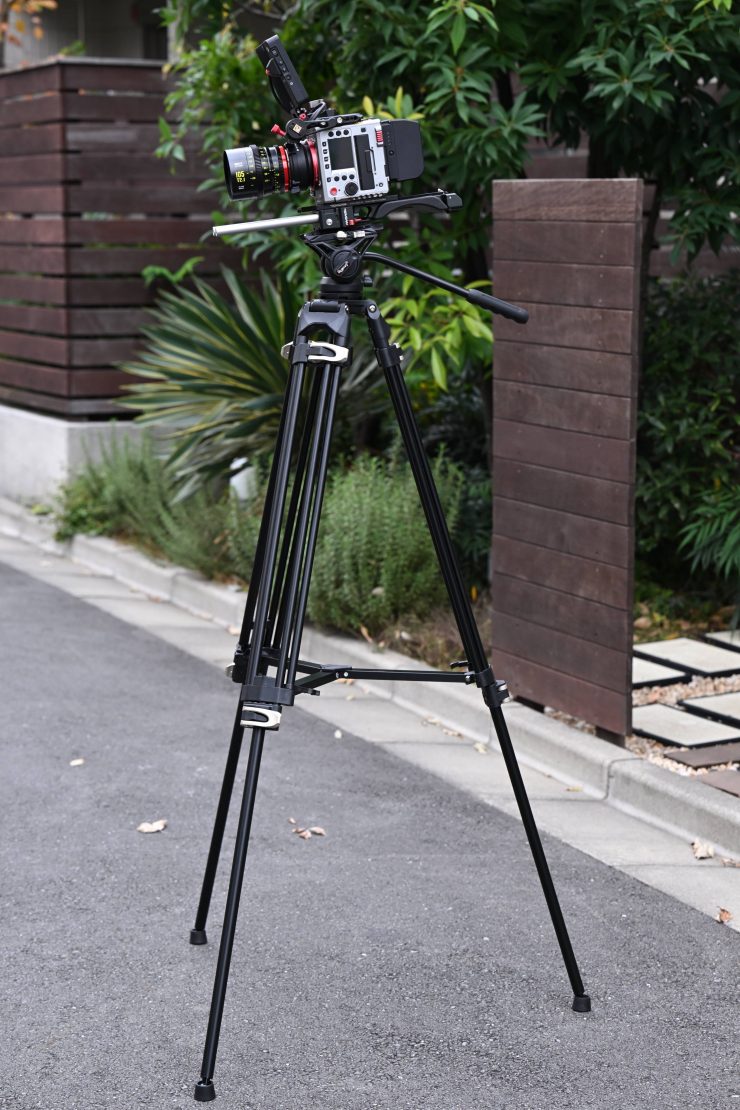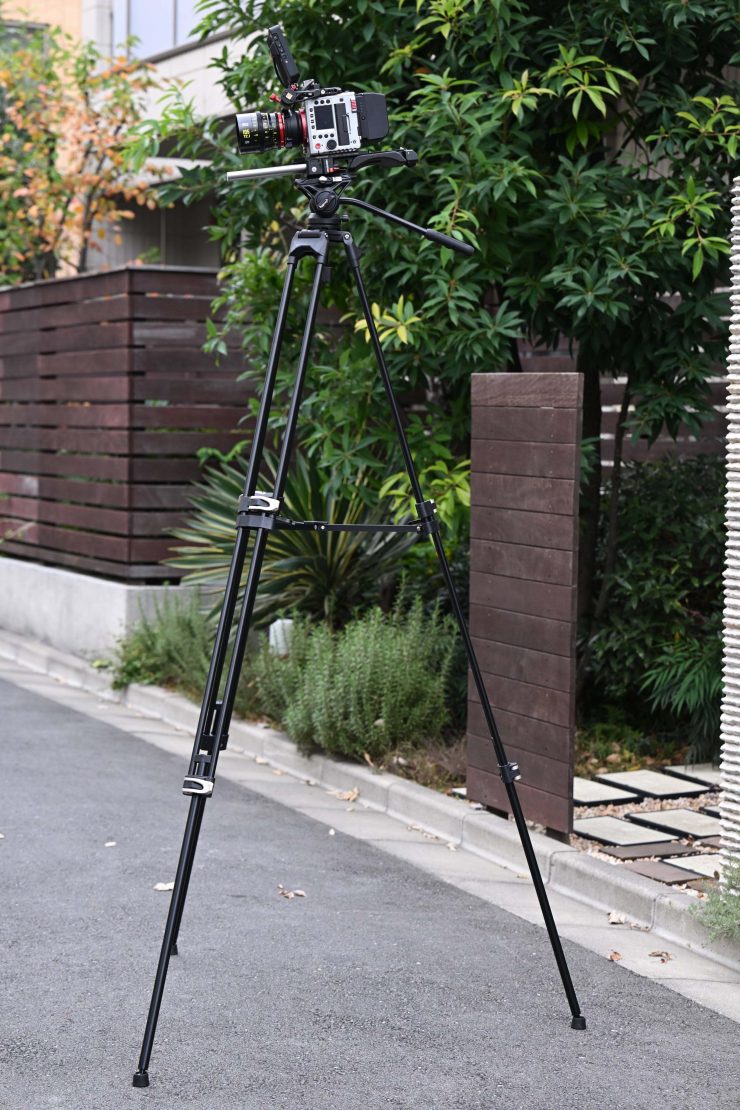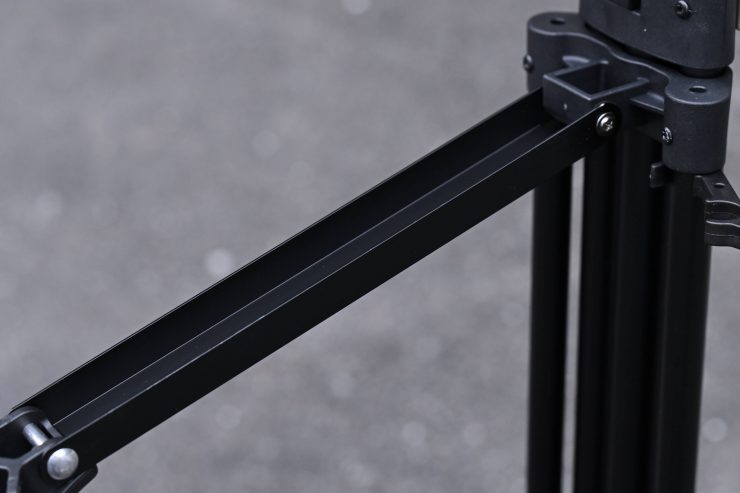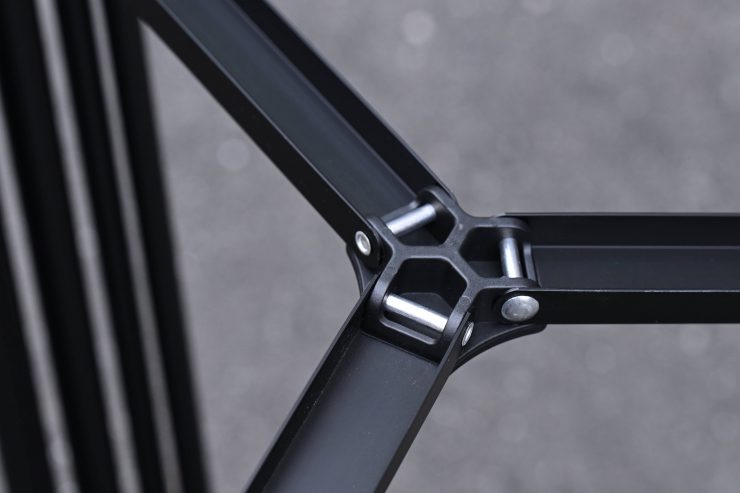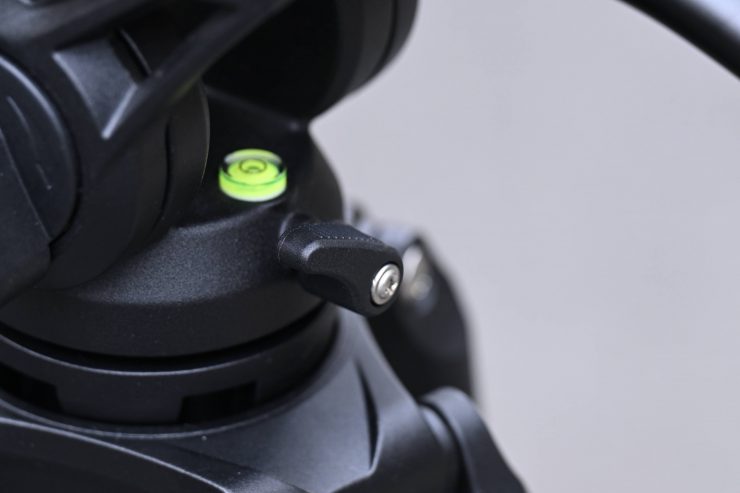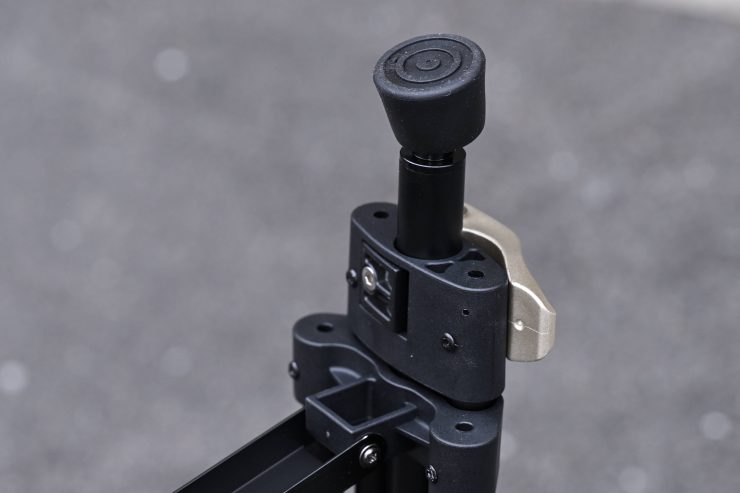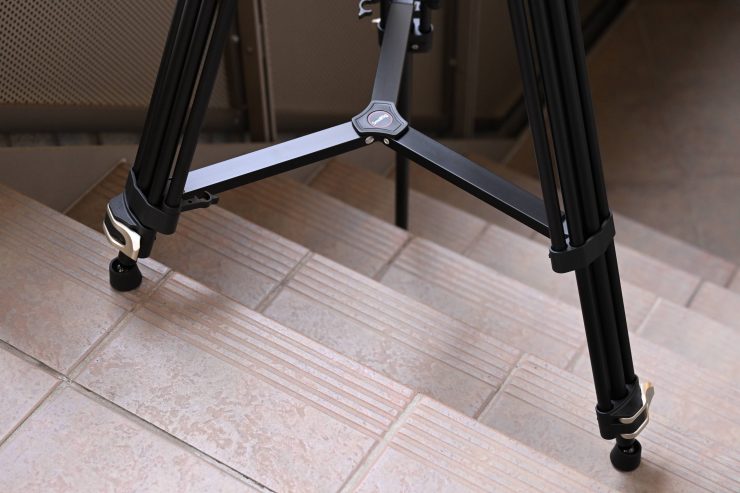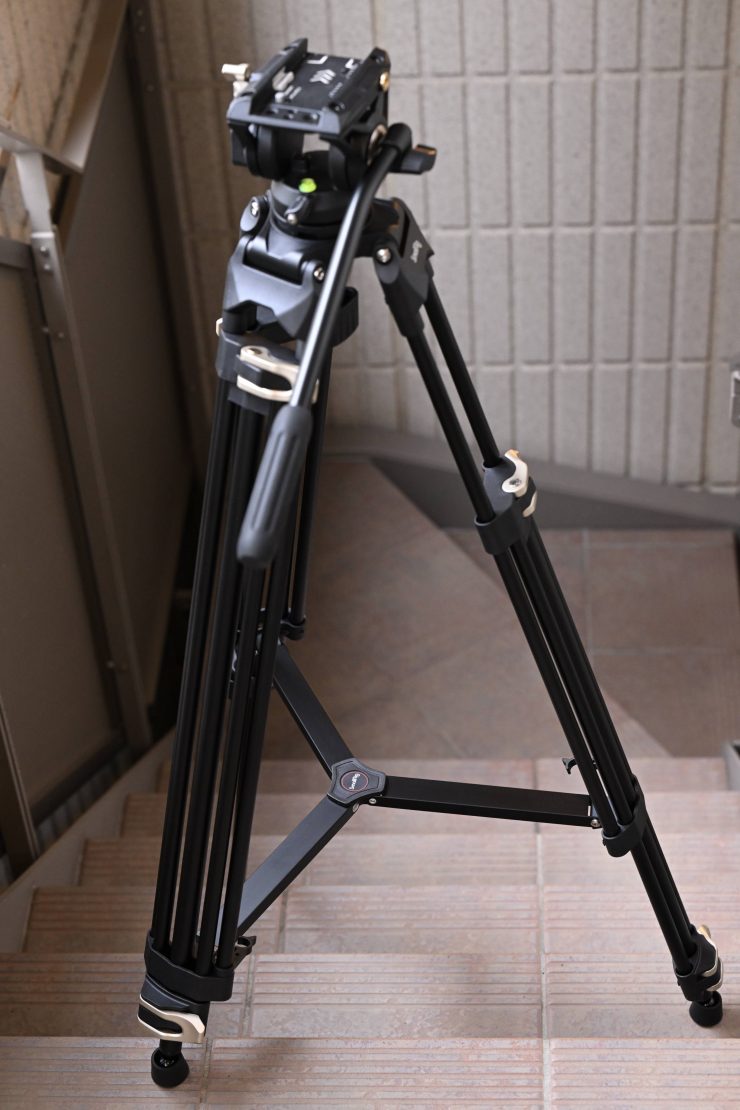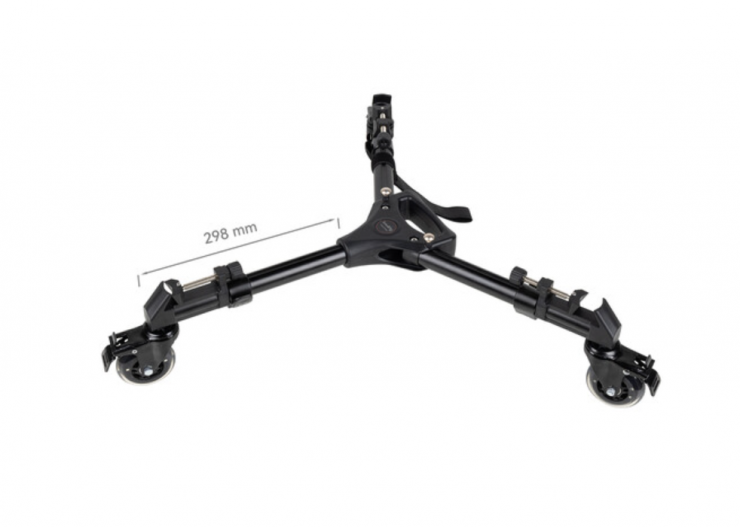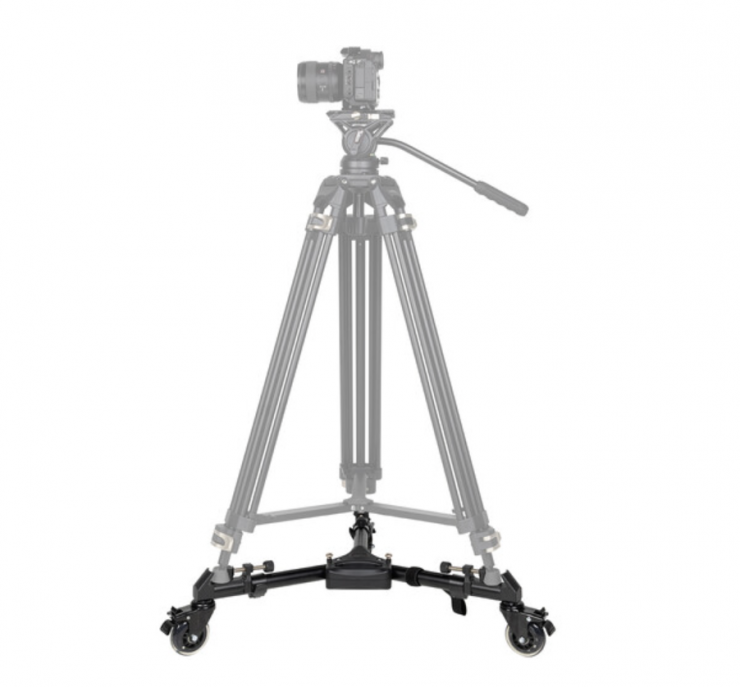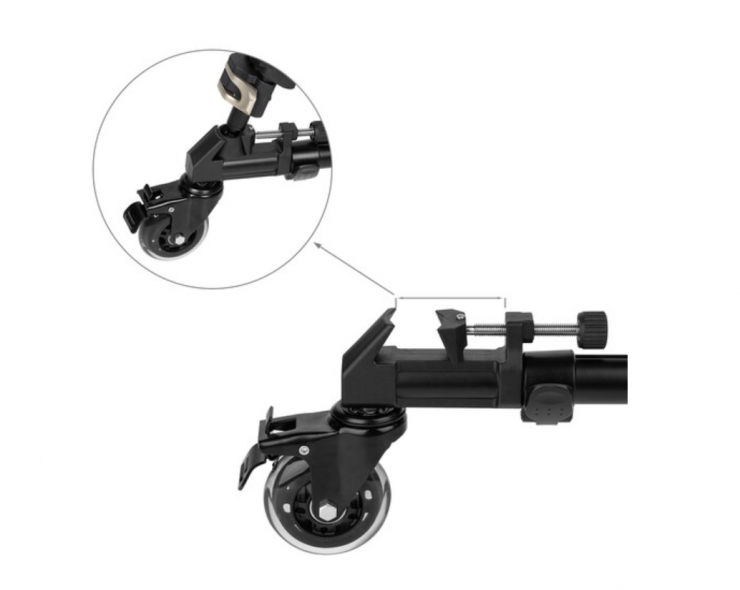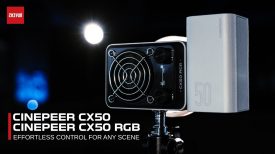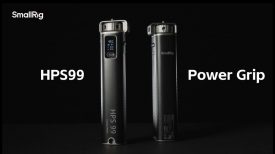
The SmallRig Heavy-Duty Fluid Head Tripod is a cost-effective system for content creators. It features a new head design and an updated quick-release plate with a built-in spanner.
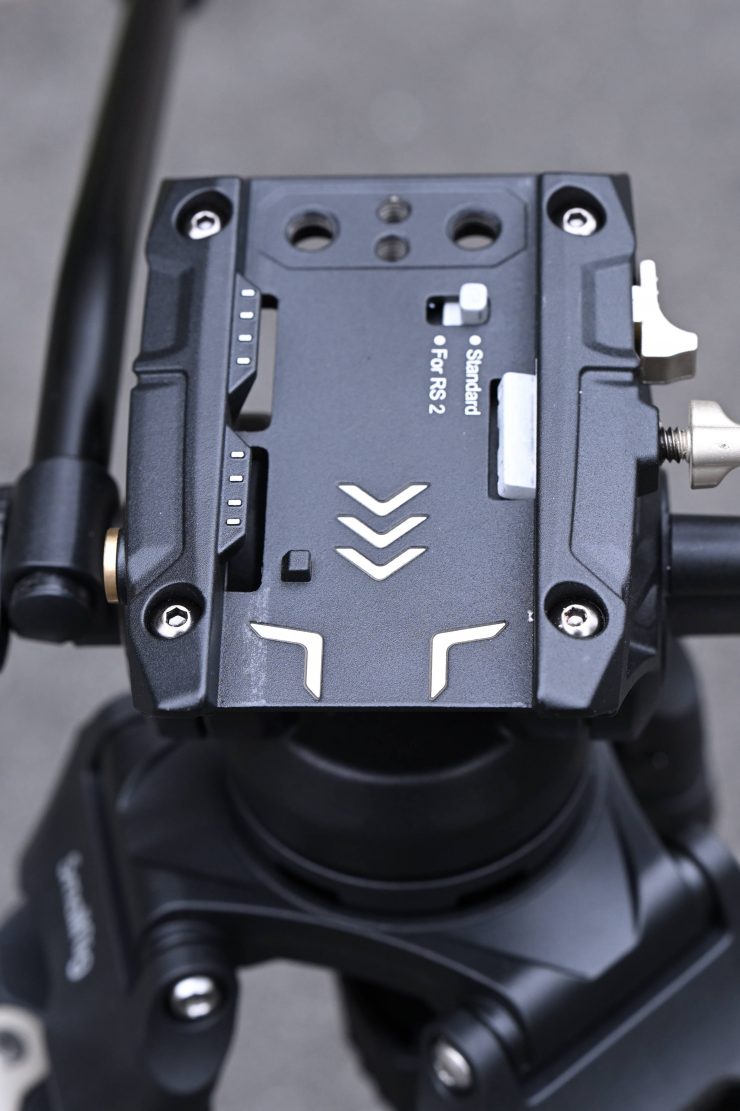
The head plate slot has built-in screw holes and the bowl base comes with 1/4”-20 threaded holes for accessory attachment. The built-in damping and balancing system enables 360° horizontal and +90°/-75° vertical movements. There are also 3/8″-16 threaded holes in the head base to support most tripods, arms, sliders, and other accessories with 3/8″-16 screws.
This tripod features a built-in bubble level, and it works with a 75mm bowl base. I am going to review this product in the same way I review any product. It doesn’t matter how much it costs, who makes it, or where it comes from. Every product gets reviewed in the exact same independent way.
How much does it weigh?
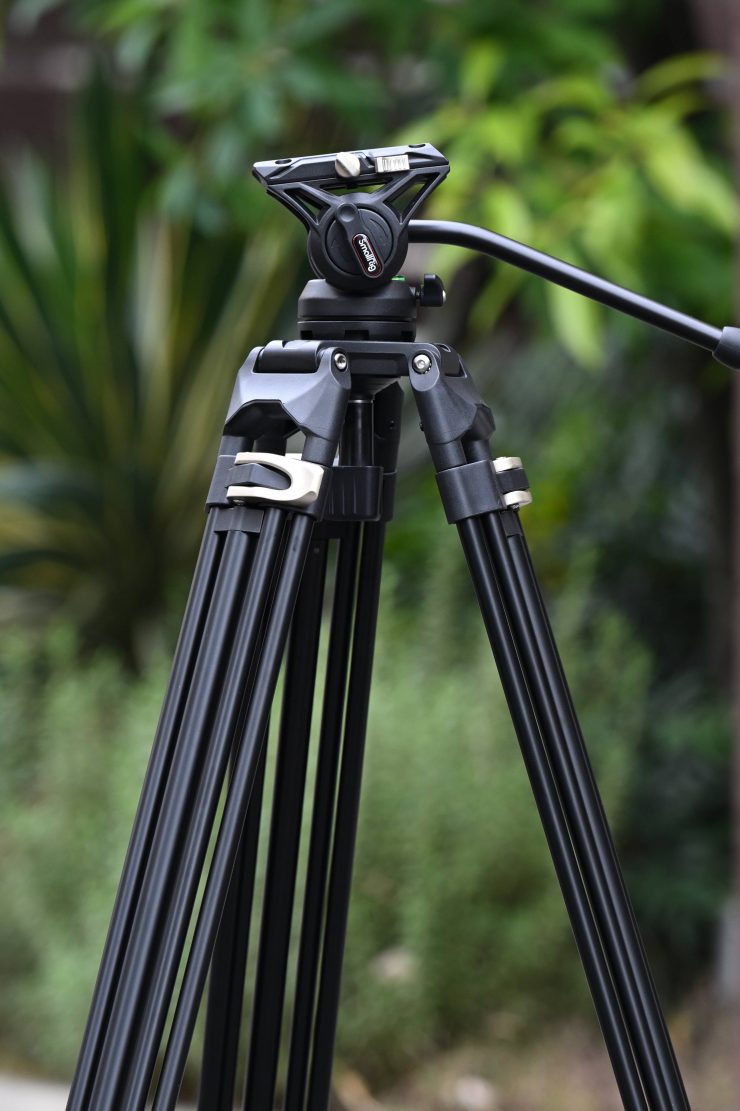
The SmallRig Heavy-Duty Fluid Head Tripod is claimed to weigh 4kg / 8.81 lbs. This does make it pretty lightweight considering its payload capacity and the height it can go. I thought it felt lighter than that and when I independently weighed it I found it was 3.6kg.
Build Quality
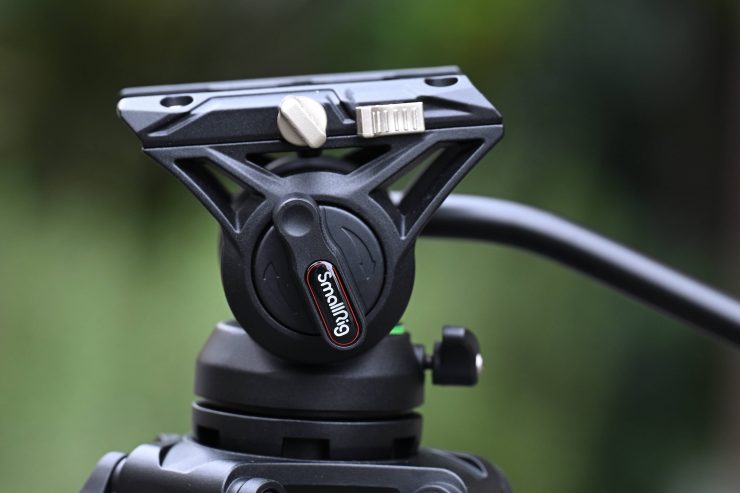
With a tripod that costs under $160 USD, you probably have a preconceived notion that the build quality is going to be average at best.
I was pleasantly surprised by the overall build quality. It is decently made despite a lot of affordable and lightweight materials being used. The tripod legs are made out of Aluminum Alloy.
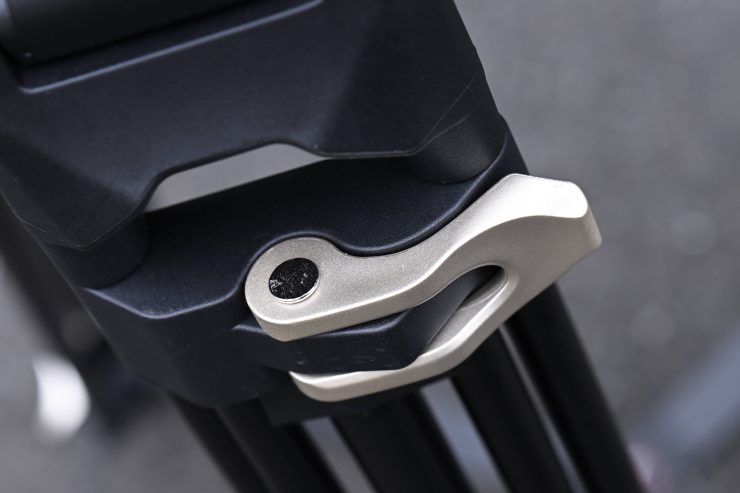
The quick-release locks are robust enough and there was nothing I came across that overly concerned me. This was impressive considering how much it costs.
What do you get?
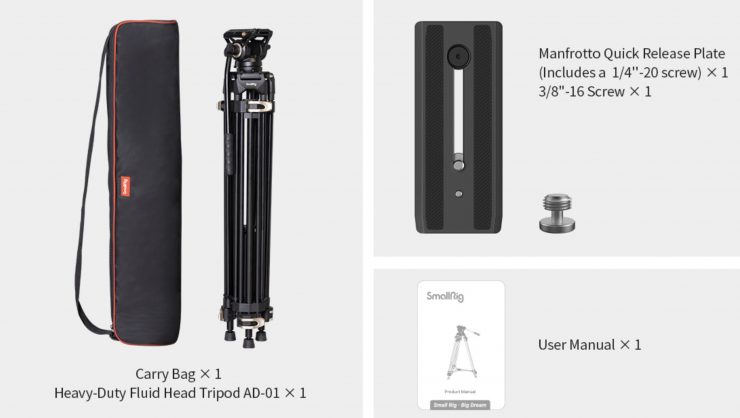
The tripod comes with the following items:
- 1 × Heavy-Duty Fluid Head Tripod AD-01
- 1 × Carrying Bag
- 1 × Manfrotto Quick Release Plate
- 1 × 1/4”-20 Screw
- 1 × 3/8″-16 Screw
- 1 × User Manual
Payload capacity
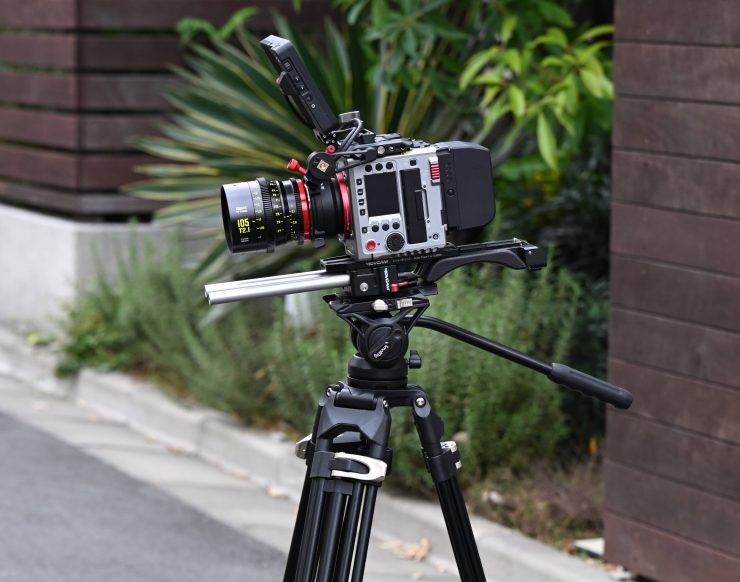
It is probably a bit of an oxymoron to call a tripod Heavy-Duty when it only has a maximum payload of 8kg / 17.63 lbs, however, in saying that, if you are buying a tripod that is less than $160 USD, 8kg is a decent payload capacity.
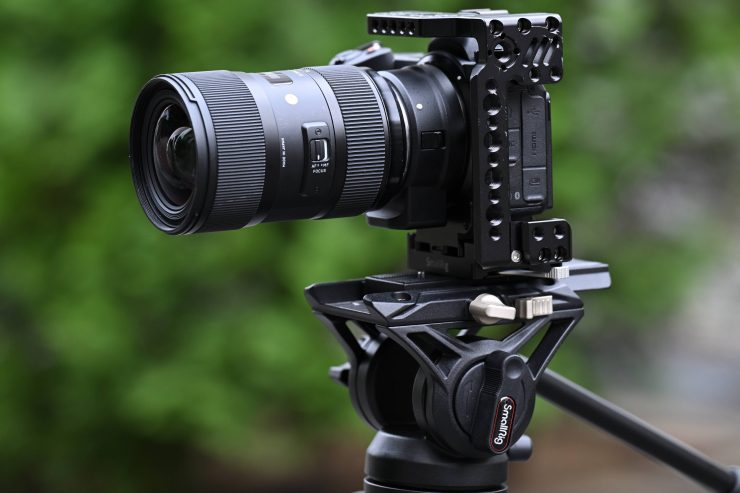
The 8kg payload capacity allows you to use a wide array of options from small to mid-sized digital cinema camera packages (depending on what lens, etc. you are running), to mirrorless hybrids.
How high & low can it go?
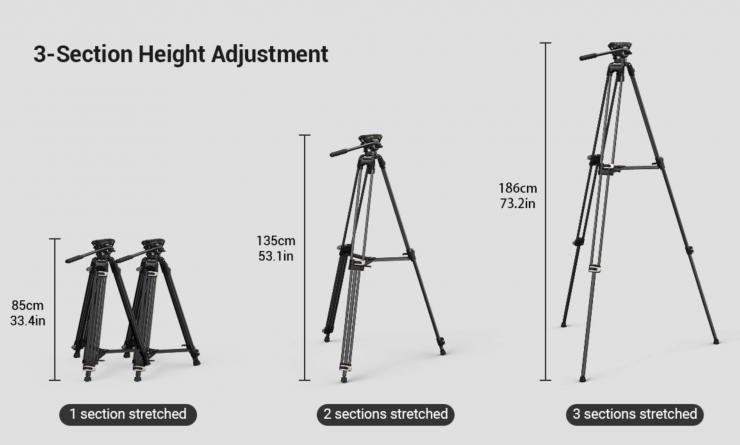
The tripod legs have a 3-section extender with quick-release flip-locks. The minimum height of 85cm /33.4″ and the maximum height is 186cm / 73.2″.
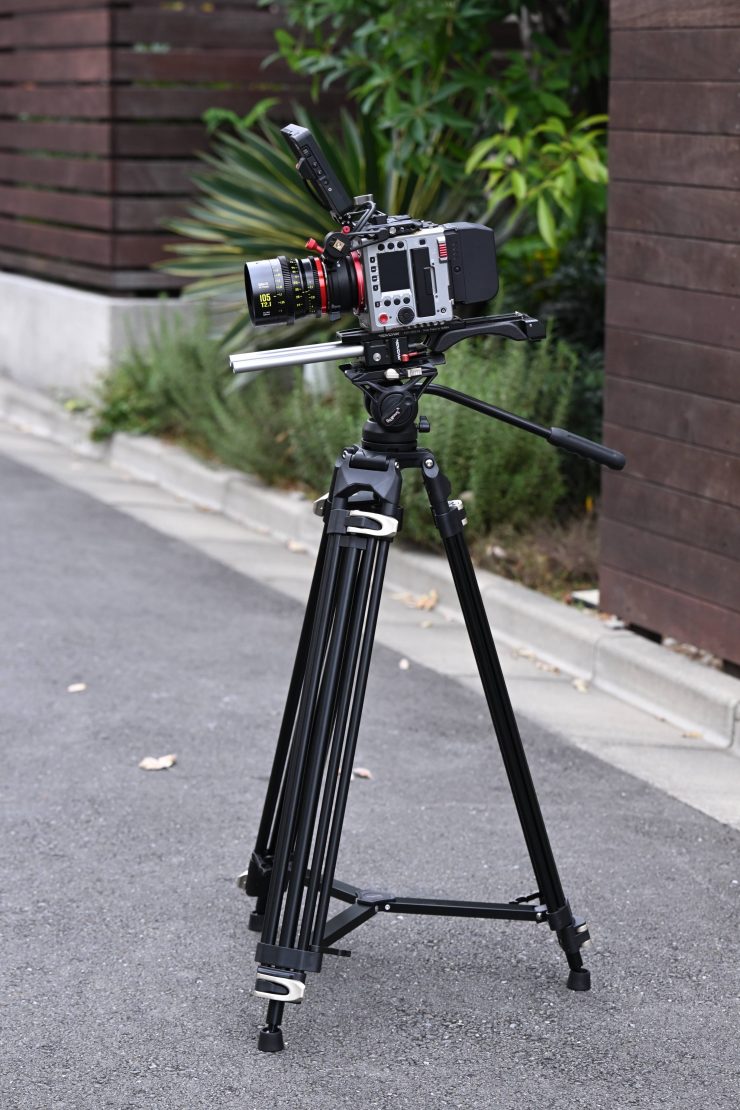
The tripod offers a decent height operating range that will suit most people’s needs.
Carry Bag
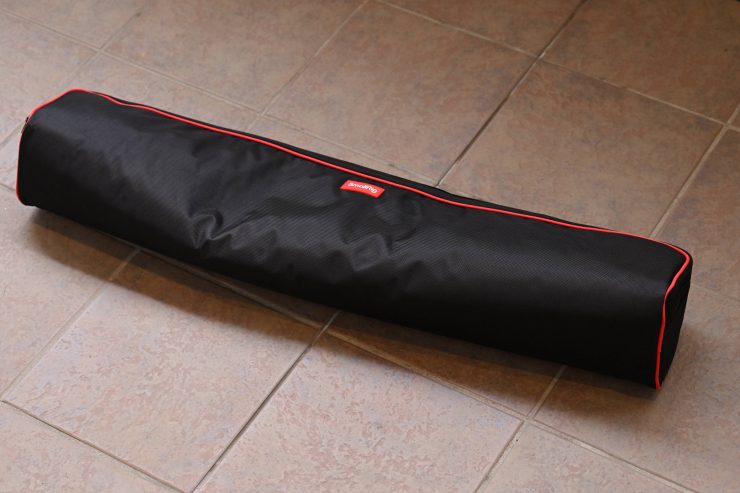
The SmallRig Heavy-Duty Fluid Head Tripod comes in a lightweight carrying bag. This bag is ok, but I do worry about how long the zippers will last.
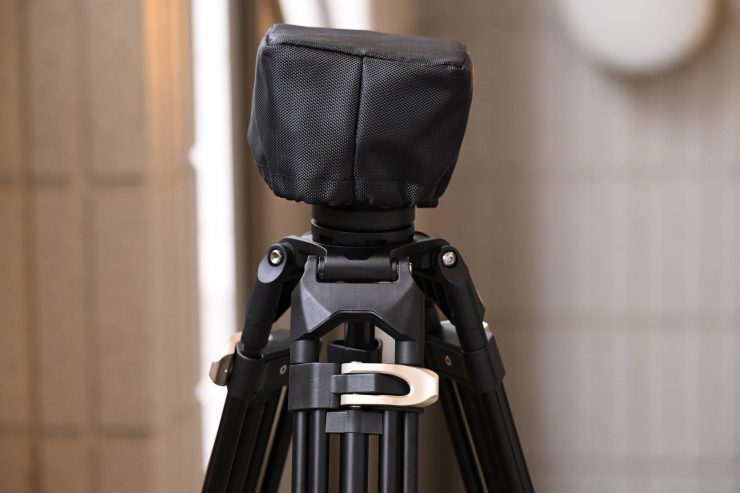
While the bag isn’t going to offer any real protection for your tripod if you are traveling or checking it in on a flight, SmallRig does include a padded protection cover that fits over the head. For day-to-day storage, it is perfectly sufficient.
You can’t really complain too much about getting a free carry bag with a tripod that costs under $160 USD!
Spreaders
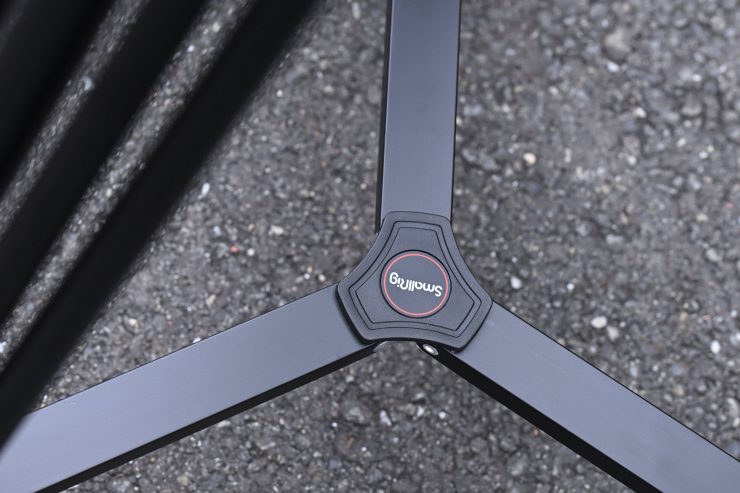
The tripod comes with spreaders, however, they are not removable or adjustable.
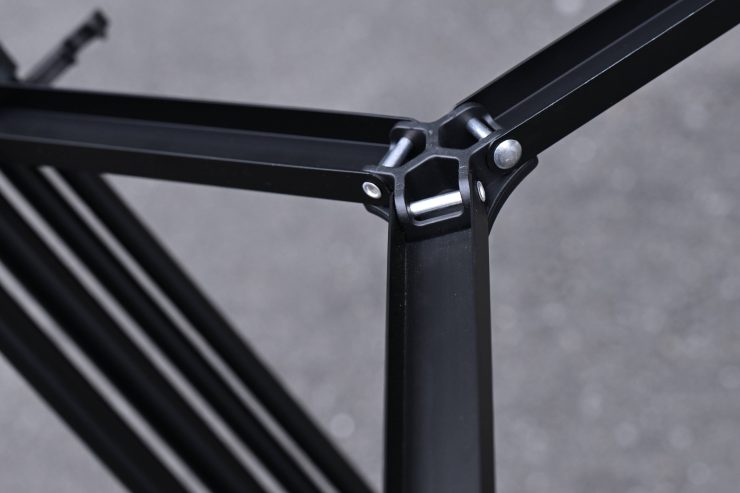
One thing I didn’t like is that the spreaders don’t have a rounded edge and they are quite sharp. This is something you need to be aware of.
The spreaders do their intended job, and again, you can’t complain much considering how much this tripod system costs.
Operation
A tripod can have decent enough build quality and good features, but if it doesn’t actually perform well then none of that really matters.
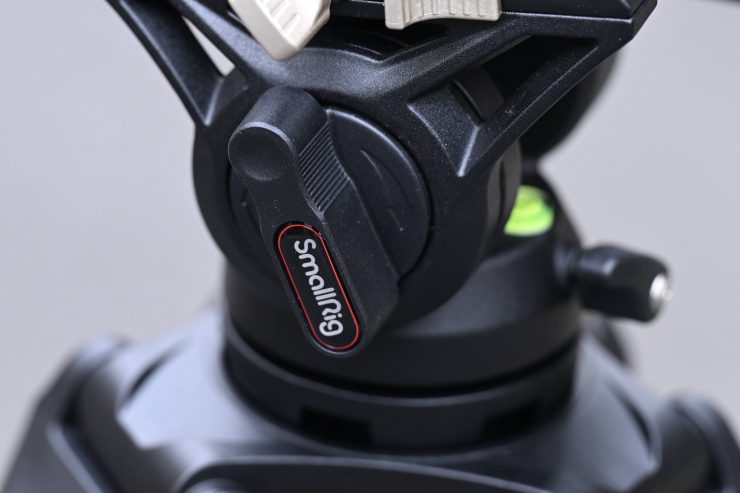
The overall operation of the tripod is good considering its price point. The pan and tilt adjustment knobs don’t offer a lot of finite adjustment. There are no counterbalance steps or setting adjustments.
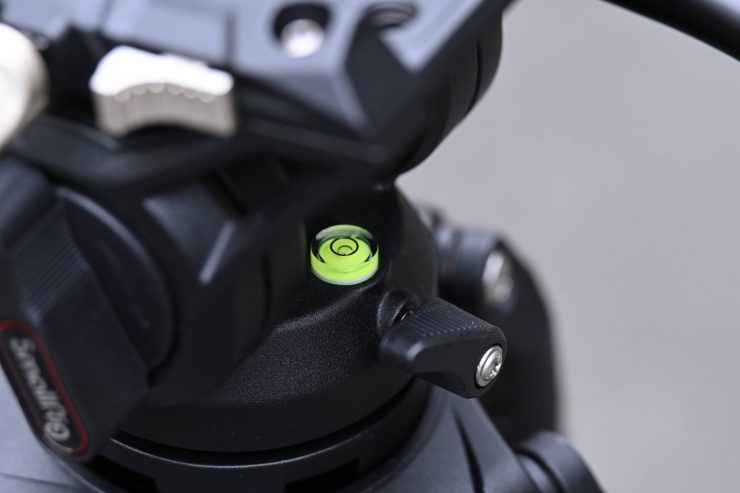
While the tripod does feature a built-in bubble level indicator it isn’t illuminated so you can’t see it in darker conditions.
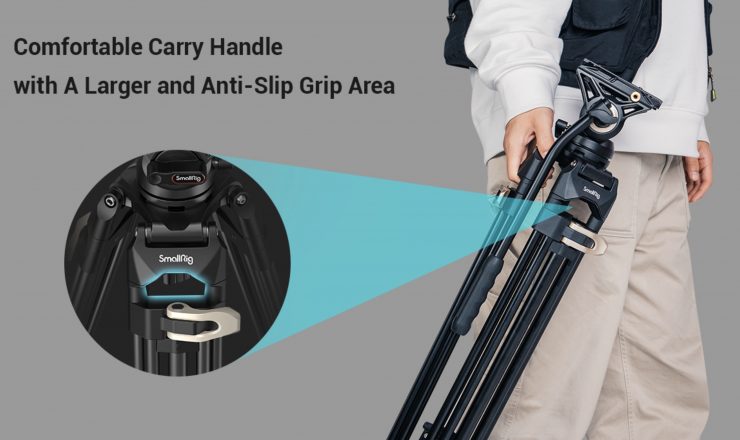
SmallRig also advertises that it comes with an anti-slip carry handle. While it does have three of these on the tripod legs, you can only fit three fingers inside and I personally found that it wasn’t that comfortable or easy to use.
How is it to use with a Digital Cinema Camera?

I tried the tripod out with a Kinefinity MAVO EDGE 6K, a PL lens, and a V-mount battery to see how well it performed. This combination weighed 5.4kg / 11.9 lbs.
As I just mentioned, the pan mechanism doesn’t really offer anything in the way of adjustment. It is either locked down or you can move it. You can slightly lock it down and add a little bit of resistance to the pan axis, but this is not intuitive or easy to do and I didn’t find that it made any big difference.
Even if you fully lock off the pan axis you can still get the head to move which is not ideal.
When it comes to the tilt axis, again just like the pan axis, there is not much in the way of adjustment. The lack of adjustment makes it hard to do smooth tilts because as the weight of your camera payload moves past the horizontal, gravity takes over. While you can fiddle around with the tension knob on the tilt axis, it doesn’t offer any kind of tactile or repeatable feel.
Even if you lock off the pan or the tilt axis, you can still get the whole head to move and what actually happens is that the bowl head leveling device will also come loose.
What about panning and tilting at the same time?
Panning and tilting at the same time create the same challenges that I just mentioned earlier. It is hard to set both the pan and tilt axis to have an equal amount of tension.
I would personally recommend that you hold the pan handle and the front of the camera at the same time if you are panning and tilting. While this doesn’t completely solve the problem, it does help to mitigate it.
Side plate lock-in
It is very easy to attach your camera package to the tripod head. You simply loosen the locking mechanism and then drop your camera in, with the baseplate attached. Then all you need to do is tighten up the locking mechanism.
To remove the camera you just loosen the tightening mechanism and then pull back the locking lever.
What about plate adjustment?
You can adjust the plate that goes onto the fluid head to obtain better balance. What I like is that SmallRig has locking pins, so that you can’t move the plate past certain points.
How is the stability?
At its minimum height, the tripod is solid and it doesn’t move around or flex.
Once you extend the first stage of the legs it does introduce a bit of flex, but it isn’t too bad.
If you have both stages of the legs adjusted and use the tripod at height then there is certainly a lot more flex, especially towards the bottom of the legs.
I wouldn’t recommend using the tripod with both stages opened all the way up and the spreaders collapsed in. This doesn’t offer very good stability.
What are the feet like?
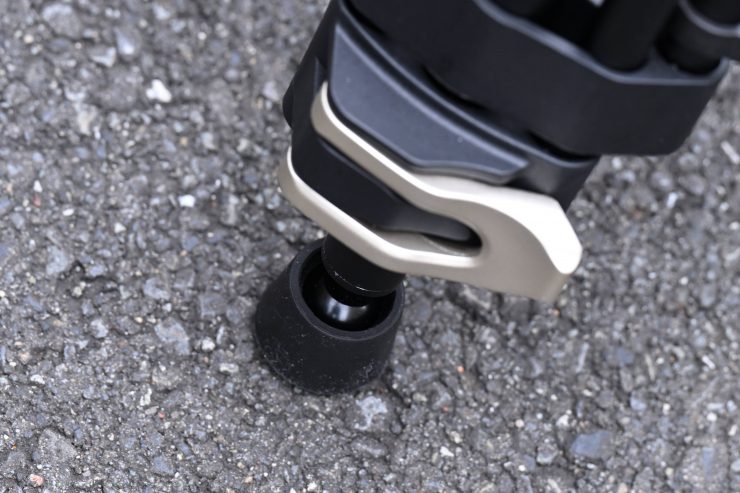
The feet have a type of small ball joint on them so you can place the tripod on more uneven surfaces. Their actual footprint is quite small, so there isn’t actually a lot of contact with the ground.
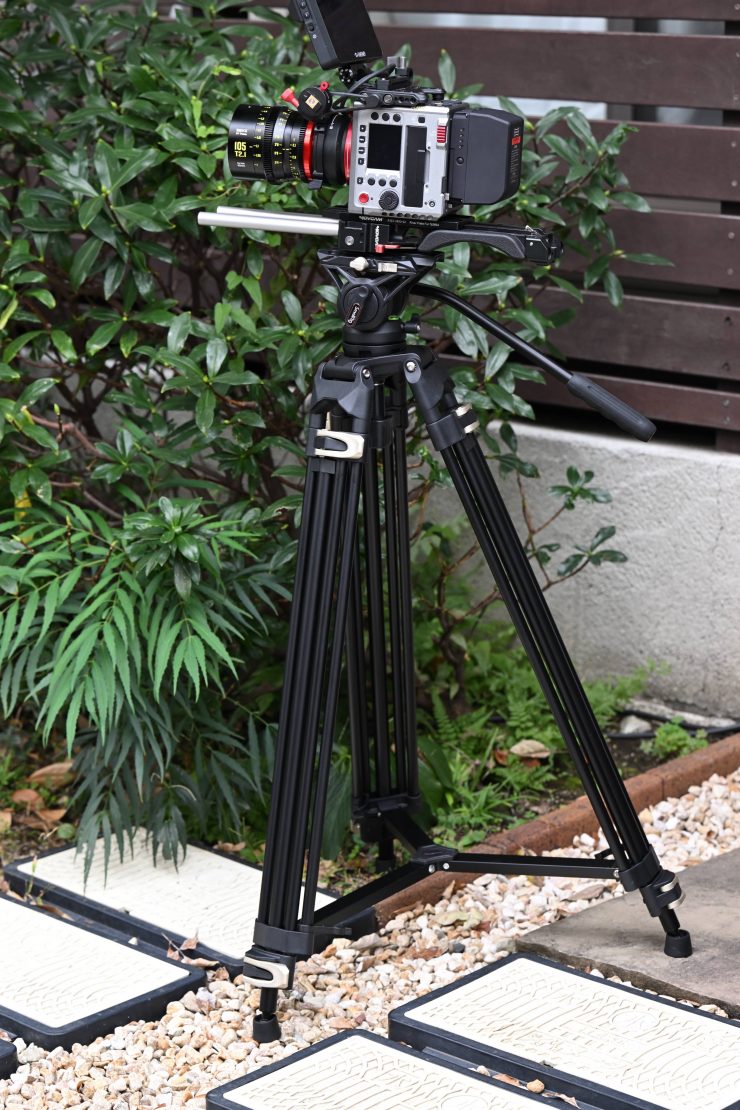
You can still use the tripod on uneven terrain and it still works well on stairs if you have the tripod at a certain height. Because the spreaders don’t adjust out you do have a limited ability to use the tripod at its lowest height on uneven terrain.
Switch your camera from the tripod to a gimbal
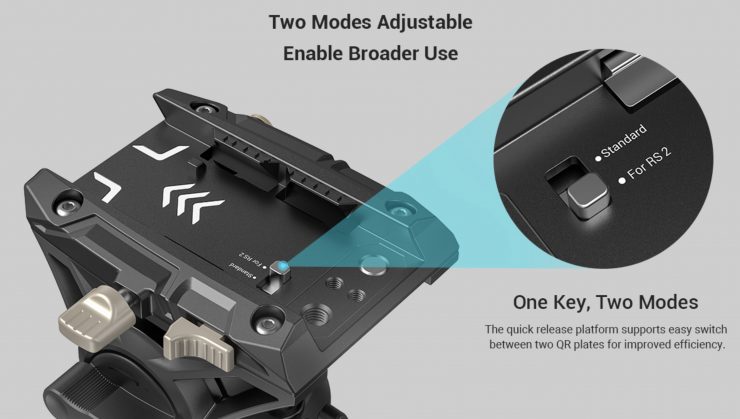
The fluid head’s receptor plate has a little switch that you can activate if you want to use it with the quick-release plate of DJI RS2 / RS 3 / RS 3 Pro.
What is it like to use with a mirrorless hybrid?
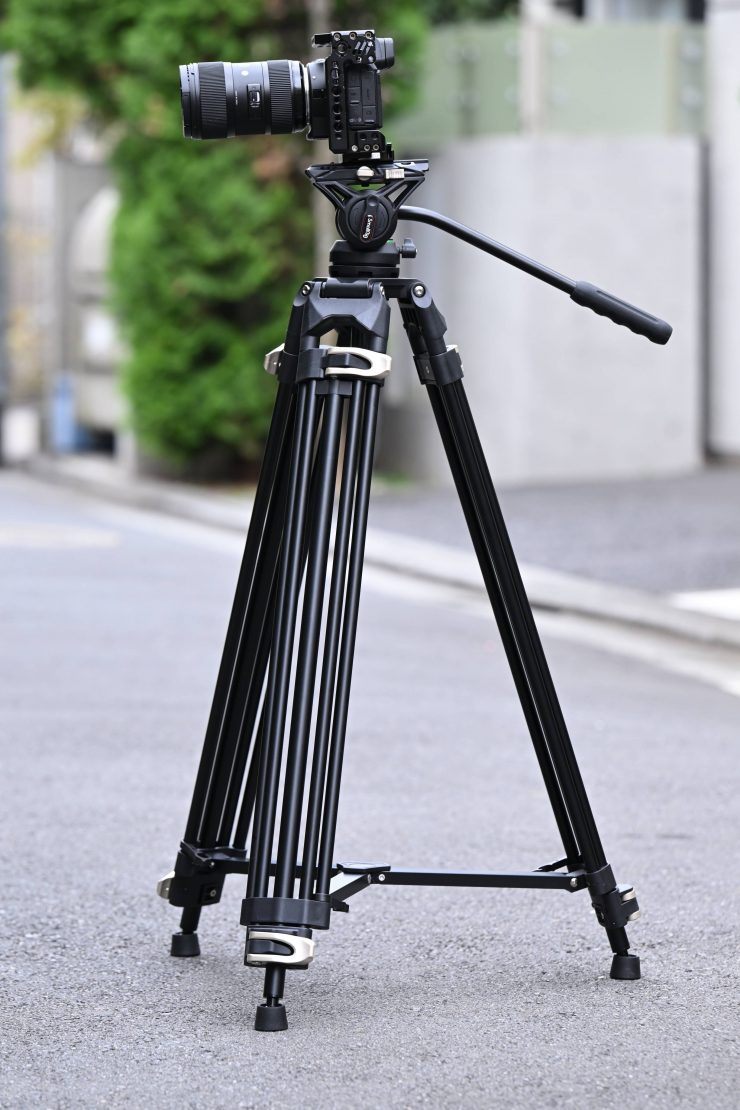
We have seen how it is to use with a digital cinema camera, but what about a mirrorless hybrid?
I tested the fluid head out with a Nikon Z6 because I wanted to give you an indication of how it performs with a smaller-sized mirrorless hybrid.
The pan functionality works pretty well, despite there being no finite adjustments.
When you are trying to tilt things take a turn for the worse. The problem when using a tripod that doesn’t have any counterbalance adjustments or settings with a camera that doesn’t weigh much when you try to tilt is that it is virtually impossible to create any smooth movement.
Because of the resistance in the head and the fact that it was designed to carry payloads up to 8kg, you get a massive rebound effect on the tilt axis. This is something you seriously need to be aware of if you plan on using this tripod with a lightweight camera.
Panning and tilting are a little easier because you can use the momentum of the pan to help with the tilt. While there is still some rebound effect it isn’t as noticeable as when you are just tilting.
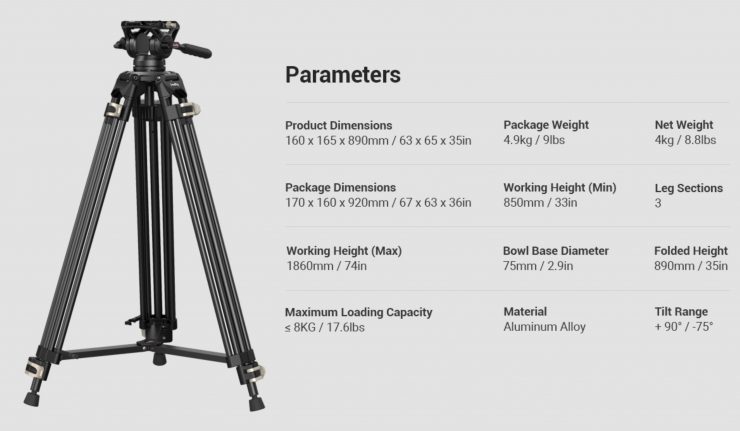
SmallRig Universal Tripod Dolly 3986
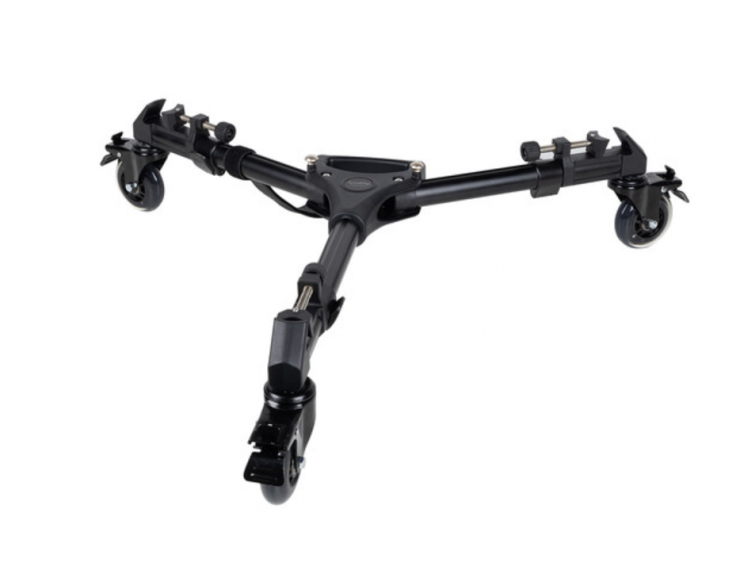
SmallRig also sells the Universal Tripod Dolly 3986 which is a nice addition and a very affordable optional extra ($59.90 USD) for the tripod.
Conclusion
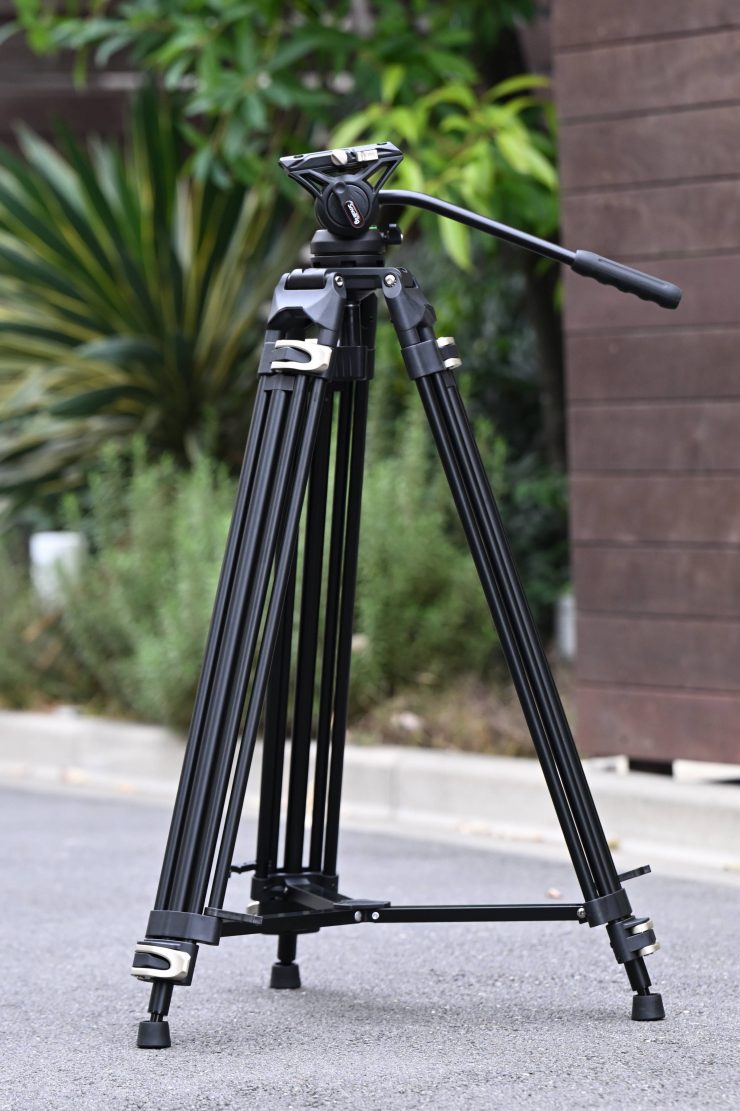
To be honest, I see the SmallRig Heavy-Duty Fluid Head Tripod as a good solution for a second camera when you need a locked-off shot. For that particular use case, it works extremely well for the money.
While you can use it and get reasonably decent results with a heavier camera package such as a small to a mid-sized digital cinema camera, it isn’t as good when using a mirrorless hybrid.
The build quality and value for money are incredible, considering what you get for $159 USD. I didn’t for one moment think this tripod was going to rival options that cost considerably more money. The legs alone are worth the $159 USD and you could just ditch the included head and use your own 75mm bowl head.
I am amazed that SmallRig is able to sell a complete 75mm bowl tripod system for less than $160 USD. Sure, it is far from perfect, but what you get for your money makes it a very good buy as long as you understand its strengths and weaknesses.

